craft review by Anne-Marie Strohman
In movie openings, or transitioning from one location to another, often have an establishing shot–a wide view that shows you where the next scene takes place. For instance, there might be an exterior shot of a college, then a scene in a classroom. Or at the start of Knives Out, we see a coffee cup with the text “My house, my rules, my coffee.” And a bit later, we see a full shot of the house and property. These shots set the stage for what is to come, and helps viewers know what to expect. The same thing can happen in writing for children.
Tim McCanna’s Early Reader Graphic Novel Peach and Plum, Here We Come! contains multiple stories of friends Peach and Plum, and from the get-go, Tim establishes what’s to come. Each chapter is a brief story of Peach and Plum engaging in a fun summertime activity–beach day, bikes, playing ball, flying kites–or a not-so-fun activity like CHORES. Little one- or two-page entr’actes fit snugly in between chapters and are usually structured like a joke, with a lovely little pay-off at the end. (See our interview with Tim to find out why fruit?)
But in order to get early readers on board, Tim had to draw readers in from the very first page and show them what to expect from the book. His 38-word, two-spread introduction to the book is a master establishing shot that covers not just setting, but all the elements readers need to be pulled into a story.
The Text
The story starts out with two full pages, and a page-turn into a spread that contains the table of contents.
The text reads:
I’m Peach! I’m Plum!
We like to play.
We meet up– almost–
every day.
Now school is out! It’s summertime.
Oh, by the way. . . This book’s in rhyme.
We’re always happy! Never glum.
So look out, Fruitdale . . .
Here we come!
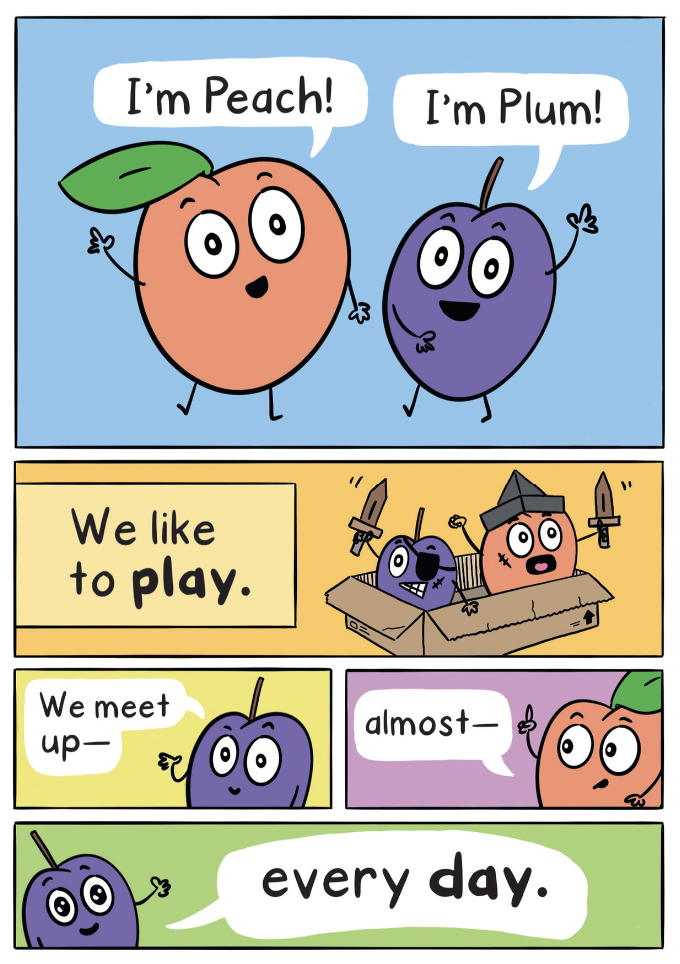
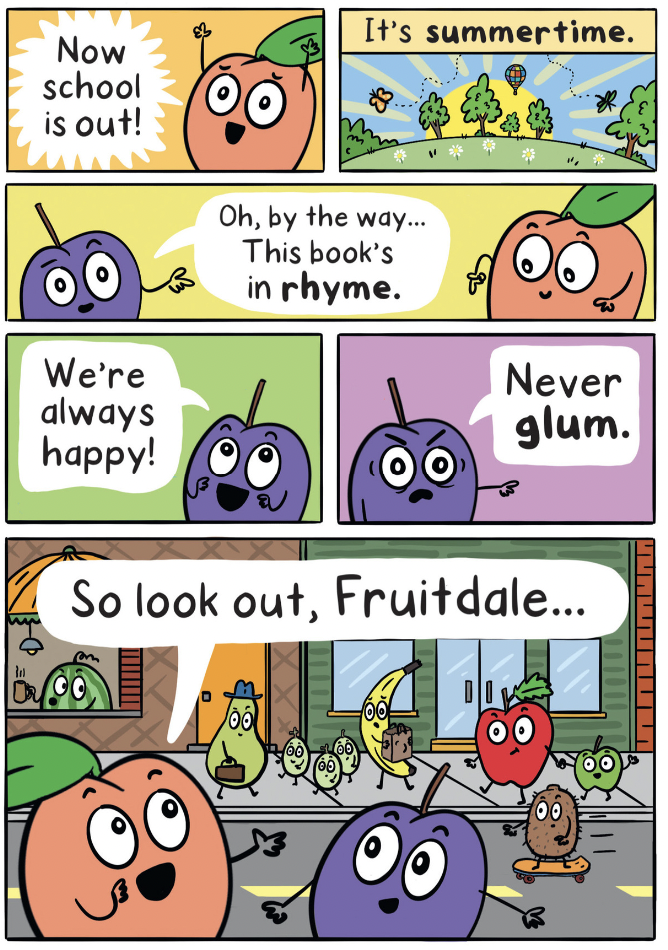
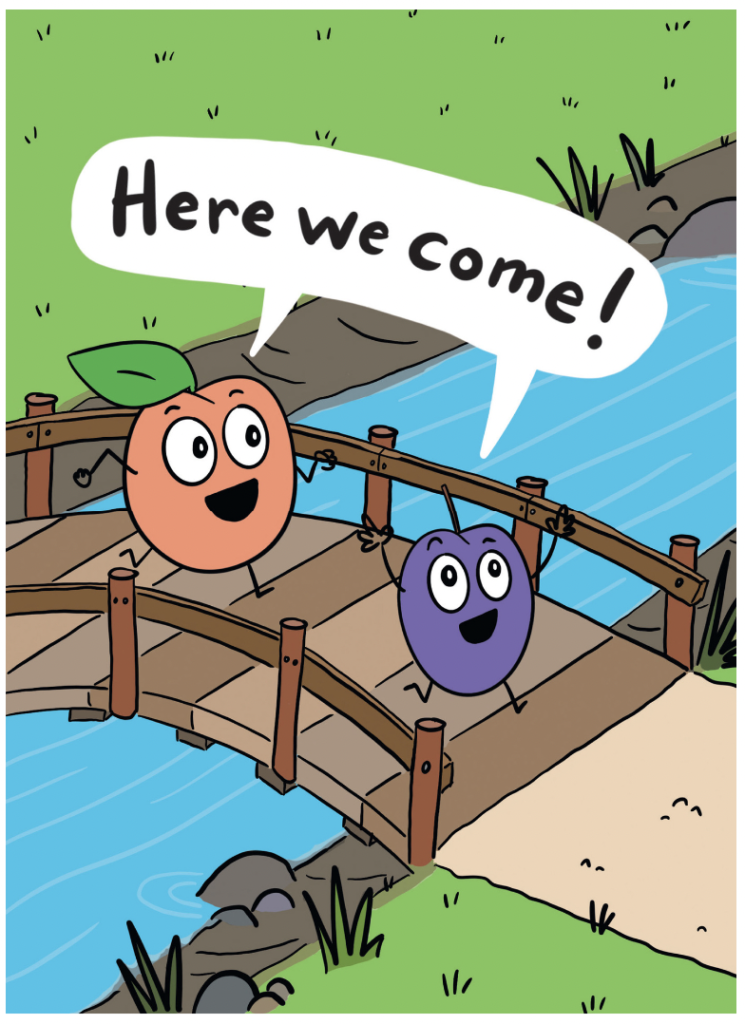
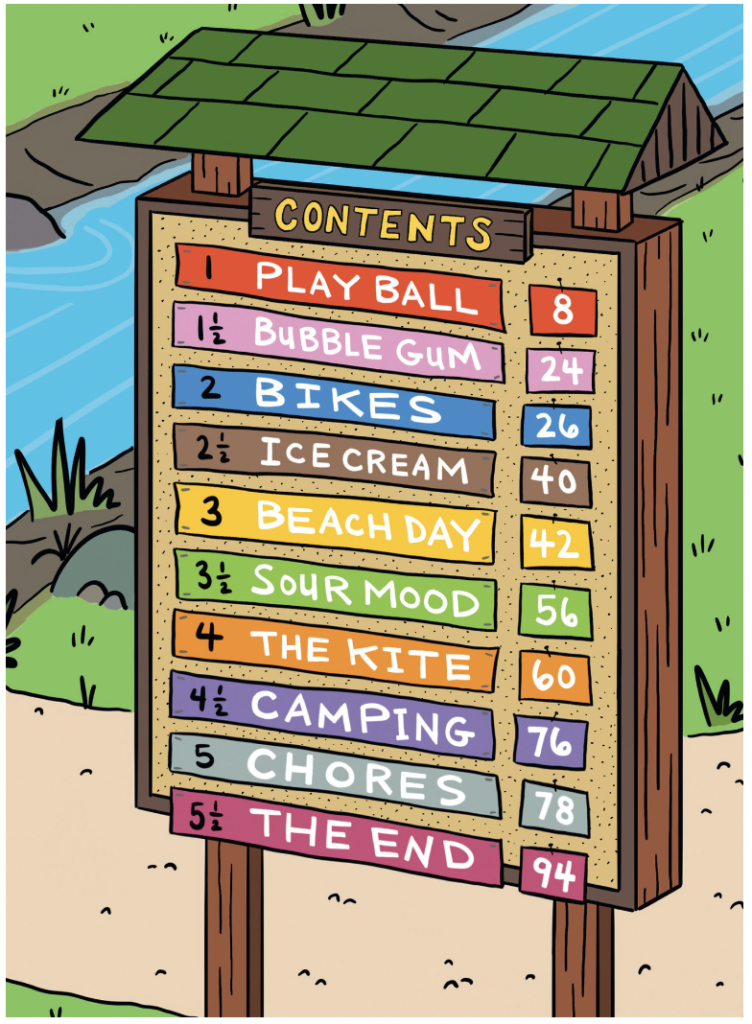
Establishing Character
We meet our characters in the very first lines. And, in fact, most of the words on the page are focused on establishing characters. We find out they like to play, they play together almost every day, and they’re generally happy characters. We also find out that they attend school, which gives us a general age for the characters. That’s a lot for a 38-word introduction!
Notice that in this very short introduction, we’re actually told a lot about these characters. But because this is an illustrated graphic-novel-style early reader, the images do a lot of work, too. We see character expressions, the characters in frame together and in frames separately, and we see them in action, playing pirates in a cardboard box accompanied by the line “We like to play.”
The combination of words and images sets readers up with characters they can love and connect with.
Establishing Setting
Also in this 38-word introduction, we find out quite a bit about setting. School is out, and it’s summertime. In those two sentences, McCanna establishes the timeframe of the story–it’s set in summer. We know from the image of playing pirates that there may be play elements that include pretend.
We also get glimpses of the town they live in, Fruitdale. The panel with the Fruitdale cityscape includes a lot of other fruits in the background–apples, kilw, pear, watermelon, grapes, banana–many of whom show up later in the book. In addition, the “summertime” panel shows a grassy field with trees, and the final full spread with the table of contents shows our two main characters running across a bridge that spans a river with grassy banks.
Establishing Tone
This book is written in iambic tetrameter (each beat has a light syllable and a heavy syllable, and there are four of those in each line–da-DUM, da-DUM, da-DUM, da-DUM) with rhyming couplets (each pair of lines rhymes). McCanna emphasizes the rhymes in this introduction by setting the rhyming words in bold.
Iambic tetrameter has a bouncy rhythm that rushes along, and the rhythm, rhyme, and meter set the tone for the book: it’s a story that bounces along, with nothing too out of sorts, and with stories that always resolve to happy or humorous endings.
Showing (and Telling) Readers What to Expect
In only 38 words and 12 images, McCanna teaches readers what to expect from this book. They know they’ll be bouncing along, reading in rhyme, and engaging with child-characters who take part in summertime play within the boundaries of their town. They also might suspect that they’ll encounter other residents of Fruitdale in the following pages.
McCanna gives us the 5 Ws:
Who: Peach and Plum, two friends who like to play and are generally happy
What: A wild romp of summertime adventures
When: Summertime
Where: Fruitdale, both the city and the natural spaces
Why: They have a hankering for fun and adventure, and plenty of opportunity now that school is out!
This short introduction sets readers up knowing what to expect in the pages to come. Even the Table of Contents sign on the second spread gives readers a roadmap for the book in its entirety.
Readers can be drawn in by the characters, the rhythm, and the content, and will get what they expect as they read on. And I suspect they’ll be delightfully surprised by the jokes and humor–a little extra twist that doesn’t quite show up in the introduction and offers readers an extra pay-off to keep them engaged.
Now it’s YOUR turn!
Revisit your introductory pages, whether you’re working on a picture book, a chapter book, a graphic novel, or a middle grade or young adult novel.
- Do you introduce the characters and establish some key characteristics?
- Do you establish the setting–both time and place?
- Do you set the tone, through word choice, rhythm, sentence length, etc.?
- Will your readers be able to clearly identify the 5 Ws?
- Will your readers be able to accurately guess what’s ahead?
If your answer to any of these questions is No, Not really, or Hmmm, I’m not sure, brainstorm how you can include those elements or make them stronger.
For more on starting stories, check out these posts:
Anne-Marie Strohman (co-editor) writes picture books, middle grade novels, and young adult short stories and novels. She is trained as a teacher, an editor, and a scholar, specializing in Renaissance Literature. She holds an MFA in Writing for Children and Young Adults from Vermont College of Fine Arts and is an active member of SCBWI. Find her at amstrohman.com and on Twitter @amstrwriter.
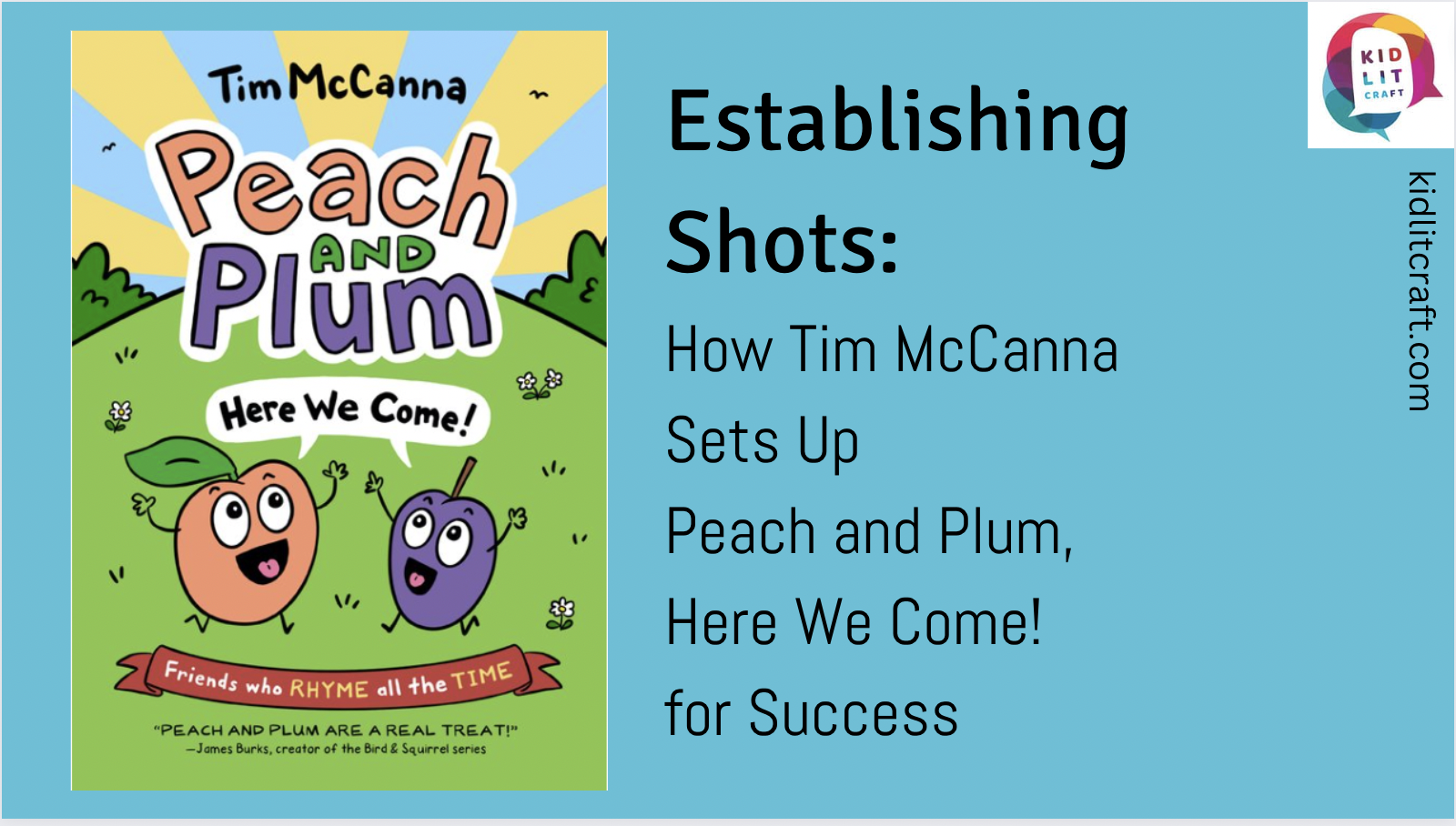
COMMENTs:
0